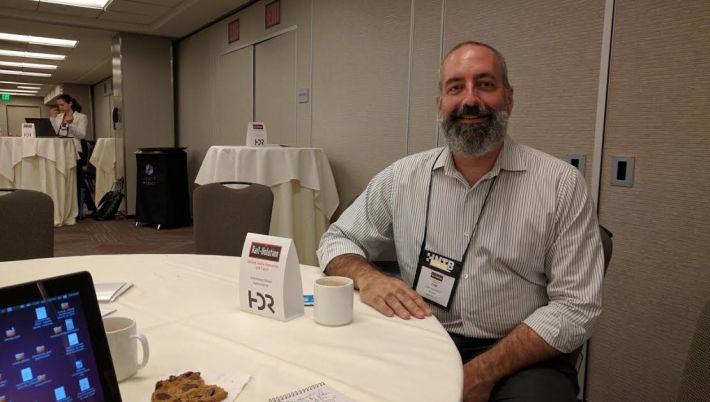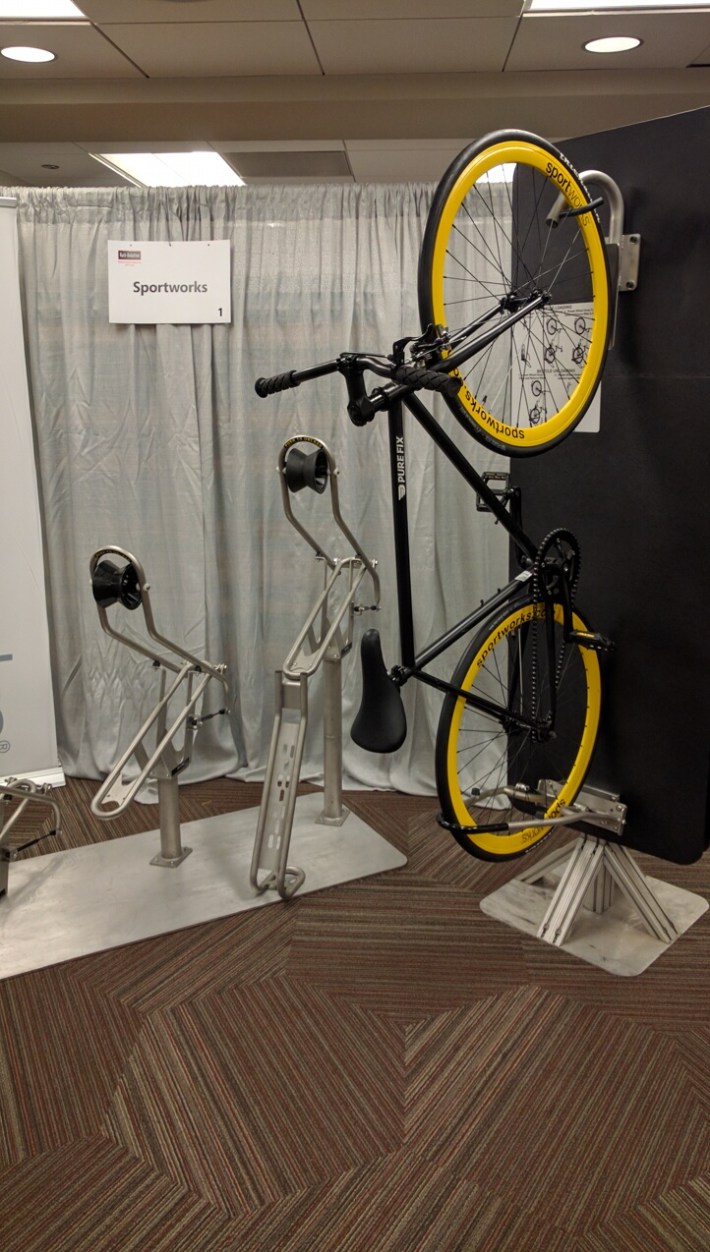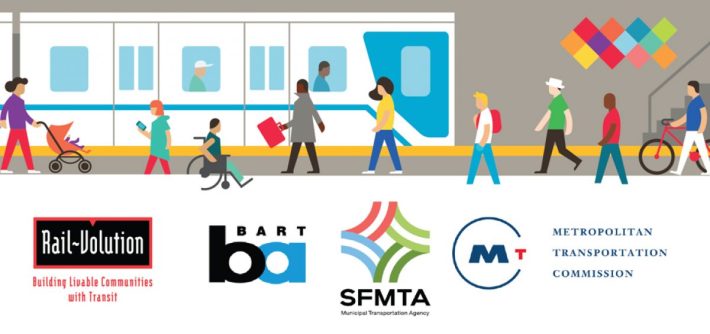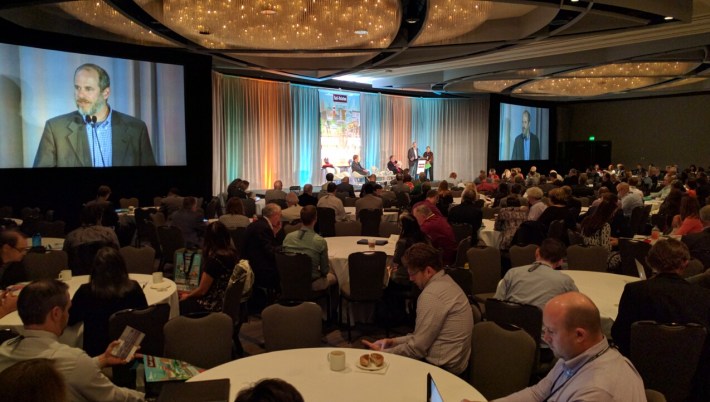Rail~Volution: All-Things-Rail Conference Comes to San Francisco
3:56 PM PDT on October 11, 2016
Some 1,200 planners, engineers, managers and transit journalists crowded into the San Francisco Hyatt Regency this week for the Rail~Volution conference. From the conference press release:
The...conference brings together thought leaders and innovators to discuss the relationship between public transit and land-use, examine best practices in transit-oriented development, and look at how to maintain diversity and inclusion in the face of a changing urban landscape. With 22 mobile workshops and over 75 thought-provoking presentation and discussion sessions, the conference goes beyond the traditional sit-and-listen experience. Workshops will focus on such topics as “Anti-Displacement: Tools for Preserving Affordability Near Transit,” “Hot Topics in Streetcar Systems” and “All Hail Car Sharing! Shared Use Mobility From an Environmental Perspective.” Other sessions include “Two Wheels Are Better Than Four: Expanding Your Network Through Bicycle Connectivity” and “Bus Rapid Transit (BRT) Smorgasbord: Three Cities Dish on Their BRT Experiences.”
Yesterday morning's plenary session featured SFMTA Director Ed Reiskin. He welcomed the attendees, who came from all over North America. The morning session focused almost entirely on housing cost and supply issues--and transit's role in solving them. "We can really think about how and what we do can address those challenges," said Reiskin. "Not to say transportation and planning are magic bullets, but I do think they can and should be part of the solution and we should use a lens of not just how can we make our cities more livable, but can we make our cities more livable for everyone?"
That tack continued with a chock-full-of-data presentation by Kim-Mai Cutler, journalist and columnists for TechCrunch. She explained that Eichler-built, single-family homes were once available to working-class families in the Bay Area. "In 1950, a home in Palo Alto was 1.5 times the median income, or about $9,400," she said. "Today if you looked at an Eichler, it's more than $2 million."
That means homes are now completely out of reach for Bay Area fire fighters, teachers, and basically anybody who's not at the top of the salary range. Steve Heminger, executive director of the Metropolitan Transportation Commission, spoke along similar lines. "We need to build. We have simply stopped building enough supply for it to affect the price. We are decades behind," he said. He and other speakers took pot shots at Howard Jarvis, the businessman and politician who brought us Proposition 13, the 1978 initiative that slashed property taxes. "Howard Jarvis was the guy who pioneered the free lunch," he said. "It fiscalized our land-use policy. Housing became a loser, and auto-sale malls became a winner," he said, since governments had to turn to sale tax to gain any revenue, "and we have been dealing with that vexing problem ever sense."
Still, Heminger, Cutler, and other speakers were positive about the outlook for the Bay Area, pointing out that many of the problems--such as housing and the overcrowding of BART--are also a function of economic success. As they put it, the reason there's so much demand for housing is because high-paying jobs have attracted so many people to the region. "The innovation of Silicon Valley is not a bad thing--but we have some catching up to do," he said. "But I'd rather be catching up with economic development" than not having it in the first place.
After the plenary, attendees broke off into various panel discussions. Yesterday morning in the 10 a.m. slot alone there were ten different concurrent panels covering everything from housing displacement to transit-oriented development, to how to make transit work in suburbs. It was bewildering for even the most seasoned conference goer trying to figure out what to attend.
Streetsblog decided on a panel discussion about transit-station improvements. Tim Chan, Manager of Planning for BART, talked about strategies for improving lighting, access, escalators, and way-finding in BART stations. "We're looking at greatest needs that can be done in a systemic way. For example, our PA system is god awful--we just have to find the money to fix it."
Beth Peterson, an architect from Seattle, talked about work to improve Vancouver's Skytrain Metro system. As with BART, Vancouver has built extensions that increased ridership--and now is faced with overcrowding at the downtown stations, since they were designed with a smaller system in mind. But that's challenging: "Construction has to keep trains running and get trains running better," she explained. In Vancouver the strategy was to build totally new, wider staircases and access ways before closing the old ones, which were then also widened and improved in a second phase of construction. They also added wide glass weather screens to the outsides of the elevated stations and improved lighting.
So how is the overall conference shaping up so far?
"What I've seen so far has been great," said Tom Radulovich, President of the BART Board and Executive Director of Livable City, in a side interview with Streetsblog. "The first Rail~Volution I went to was in Portland in 1998--radical ideas are increasingly becoming establishment ideas...such as Transit Oriented Development, which is now best practice."

There was as much value to the intersession breaks, where presenters and attendees could grab coffee, compare notes, exchange business cards, and speak with vendors. Representatives from Caltrain were there recruiting engineers and planners to help with the electrification project. Sportworks from Woodinville, Washington presented some bike rack hardware, designed to go inside train cars. BART, now that bikes are permitted at rush hour, should definitely check them out. Streetsblog will try to steer Radulovich to the booth.

Santa Rosa-based LifeGuard Systems was there too, selling safe-hit posts and other safety hardware. It seems a shame with the $545 price tag to attend the conference, members of the guerrilla safety agency, SFMTrA, probably didn't get a chance to chat with them about buying more safe-hit posts. Thank goodness transit journalists, including Streetsblog SF and Streetsblog Denver, get free admission.
Read More:
Stay in touch
Sign up for our free newsletter
More from Streetsblog San Francisco
SFMTA Starts West Portal Outreach
Agency presents plans to block traffic from crossing in front of the train station






